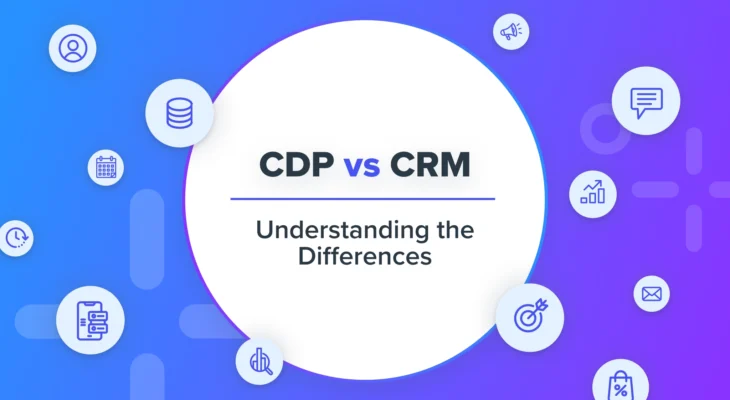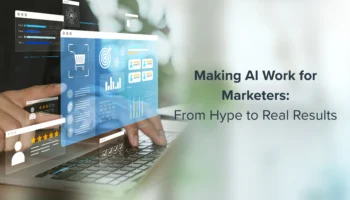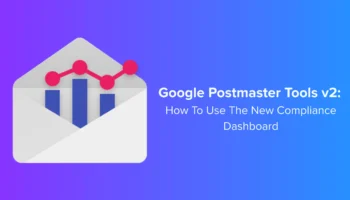Imagine a customer engaging with your brand across five different touchpoints: browsing your site, opening an email, clicking an ad, visiting a store, and speaking with support. Yet each interaction sits in a different system. Many organizations still face this reality, which creates gaps in understanding and limits the ability to deliver seamless experiences.
The discussion around CDP vs CRM is central to this challenge. It addresses how businesses can align the need for personalized one-to-one interactions with the capability to unify and act on data at scale. This article unpacks the differences, explores where the two systems complement one another, and examines their evolving role in customer engagement.
TL;DR: CDP vs CRM – What’s the Difference?
CRMs and CDPs both work with customer data, but they serve different purposes. A CRM helps sales and service teams manage one-to-one relationships. A CDP unifies all first-party data into real-time, activation-ready profiles that power personalization at scale. Together, they form the foundation for modern engagement strategies.
- CRM: Best for tracking sales, service, and relationship history.
- CDP: Best for unifying customer data, real-time personalization, and AI-driven campaigns.
- Key difference: CRMs manage records; CDPs activate behavior and context across every channel.
- Together: A CDP enriches CRM data with predictive signals, while CRM data adds valuable context to CDP profiles.
- Future with AI: CDPs are evolving into intelligent engines that enhance CRM with predictive, generative, and agentic AI.
Request a Demo of Blueshift’s Unified CDP + Engagement Platform
1. Why do businesses compare CDPs vs CRMs?
Industry analysts have noted the growing importance of clarifying this distinction. For example, According to research, by 2027, 62% of G2000 sales organizations will rely on data, analytics, and AI to supplant traditional sales functions through adaptive content and engagement orchestration. This external perspective reinforces why so many leaders are now asking the question.
Businesses today are flooded with customer data. Every website visit, mobile app tap, email open, and in-store interaction generates valuable signals. But this data often lives in silos, spread across different systems. CRMs are widely adopted to help sales and service teams manage individual relationships, while CDPs are gaining traction to unify behavioral and transactional data.
This overlap leads many leaders to ask: “If we already have a CRM, why do we need a CDP?” The answer lies in the different problems they solve.
2. What is a CRM and what does it do?
A Customer Relationship Management (CRM) system focuses on helping organizations track and improve their direct, one-to-one interactions with customers and prospects. CRMs evolved out of the need for sales and service teams to log interactions, manage opportunities, and provide consistent follow-up.
Core CRM Functions:
- Contact and account management.
- Pipeline and deal tracking.
- Logging calls, emails, and service requests.
- Equipping support teams with historical context.
Best for: sales, account management, customer support.
CRMs are indispensable for relationship-driven processes, but they are not designed to provide a unified picture of customer behavior across every channel.
3. What is a CDP and why is it important?
A Customer Data Platform (CDP) was built to address a different, more modern challenge: fragmented and scattered customer data. Where CRMs depend heavily on manual entries, CDPs automatically collect and integrate data from every channel.
Unlike traditional definitions, modern CDPs that integrate engagement and AI go further: they do more than unify data, they make it actionable. With features such as real-time identity resolution, dynamic segmentation, and predictive scoring, a CDP can power marketing teams to react within moments rather than days. This evolution transforms the CDP from a passive repository into an intelligent activation layer for the whole organization.
Core CDP Functions:
- Collects first-party data across digital and offline channels.
- Performs identity resolution to link anonymous and known users.
- Cleans and unifies data into persistent profiles.
- Updates profiles in real time with every new behavior.
- Makes data accessible to all teams: marketing, analytics, product, leadership.
Best for: marketing and analytics teams that need complete, real-time profiles to personalize campaigns and measure performance.
Unlike CRMs, CDPs provide the big picture: not just a record of what was said to a customer, but how they behave across the entire journey. To dive deeper into the advantages, see our blog on the Benefits of a CDP.
4. What are the key differences between a CDP and a CRM?
To understand the distinction, it helps to see the two systems side by side.
| Feature | CRM | CDP |
| Purpose | Manage one-to-one relationships | Unify and activate customer data |
| Data Type | Manually entered records | Automated, behavioral, transactional data |
| Users | Sales and service | Marketing, analytics, product, leadership |
| Data Refresh | Updated when logged | Real-time updates |
| Output | Pipelines, service cases | Persistent profiles, segments |
While both work with customer data, they are optimized for very different outcomes.
5. Why is a CRM not enough on its own?
CRMs do a great job of tracking conversations and account details, but they were never designed to capture the full spectrum of customer behavior.
- CRMs capture sales and support interactions, but miss the behavioral context such as web browsing, abandoned carts, or mobile app activity.
- Data depends on manual entry, leaving gaps and inconsistencies.
- Designed mainly for sales and service, CRMs do not give marketers or analysts the insights they need.
In an age where personalization and real-time engagement are key, these limitations become major roadblocks.
6. How do CDPs and CRMs work together in practice?
The real value comes when both systems are connected. A CDP and a CRM integrated into a single flow create a feedback loop that benefits every team.
Rather than simply passing information back and forth, modern CDPs add features that make the integration more impactful: automated audience updates, real-time identity resolution, and AI-driven recommendations that enrich CRM records.
This means sales teams can see not just contact details but also predictive signals like churn likelihood, while marketers get more relevant audiences built from CRM interactions.
- CDP → CRM: Unified data enriches CRM records, giving sales teams visibility into customer behaviors and preferences.
- CRM → CDP: Relationship details feed back into the CDP, making behavioral profiles more complete.
The integration ensures:
- Sales and service teams gain richer context for conversations.
- Marketing builds more accurate segments.
- Leadership makes better strategic decisions based on the full picture.
For example, Ent Credit Union used a CDP integration to cut campaign audience builds from two weeks to minutes, enabling marketers to deliver timely campaigns that supported member engagement goals.
7. What is the future of CDPs and CRMs with AI?
Most discussions of CDP vs CRM stop at basic definitions, but the conversation is shifting toward real-time activation and AI-driven engagement.
- Blueshift research shows 80% of marketers say AI-powered cross-channel engagement has improved customer lifetime value.
- Predictive AI models can anticipate churn or purchase likelihood.
- Agentic AI can automate next-best actions across channels.
This represents the next stage: CDPs are evolving from static data repositories into intelligent engines that inform CRMs and help organizations act in real time. For a closer look at how CDPs differ from data warehouses, see our blog on CDP vs Data Warehouse.
What is the key takeaway on CDP vs CRM?
The CDP vs CRM discussion is not about choosing one over the other. It is about recognizing that they serve distinct but complementary purposes.
CRMs excel at managing relationships, while CDPs excel at unifying and activating customer data.
Used side by side, they provide the foundation for modern, data-driven customer engagement.
Learn how a unified CDP with AI-driven engagement can transform your marketing and customer experience. Request a demo of the Blueshift platform today.




